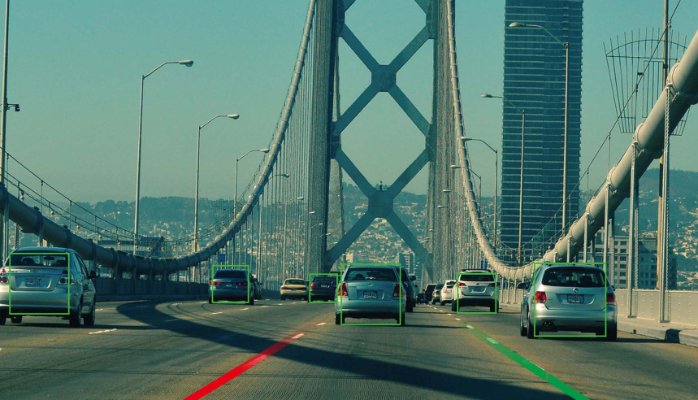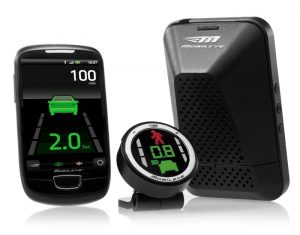There are excellent benefits of collision avoidance system in Fleet Management such as:
- Make driving safer. With advance warning for potential collisions and lane departures, driver will have a good awareness of driving conditions and potential dangers.
- Improve driving skills. The system warns the driver when it judges that his driving behavior may cause collision accidents or the driver changes drive-path without turning on cornering lamp. After using this system for a period of time, the driver will have a good awareness of safe headway and develop a good driving behavior.
- Cut down fuel consumption. A good driving behavior will surely cut down the fuel consumption, with less hard braking and less lane change, etc.
Up to now, Mobileye collision avoidance system is widely used in high end cars (OEM), Insurance (UBI), fleet management, car rental and also consumer market. And Mobileye is now cooperating with some automakers on autonomous driving car.
Well, we can see that there is a good market of such low cost camera based collision avoidance system. And there are many new companies are working on developing their own “Mobile Eye”.
- In Israel: Mobileye/BrightWay Vision
- In Korea: PLK/MOVON
- In China: AIDRIVING/INVO/Forward Innovation/Minieye/Nicigo
While I’m writing this post, my boss is reading my resignation letter. I have to do this even AIDRIVING is working on a significant and very promising artificial vision based collision avoidance system.
Chinese people likes DVR (driving video recorder) very much, especially that we can see a lot of racketeering videos on the Internet. It records the scene of accident and provides evidence to traffic police. However, DVR is useless to avoid rear-end collisions or other traffic accidents. In contrast, Mobileye collision avoidance system is regarded as an vehicle active safety solution.
“Mobileye is a technological leader in the area of software algorithms, system-on-chips and customer applications that are based on processing visual information for the market of driver assistance systems”. Mobileye’s artificial vision based ADAS(advanced driver assistance systems) technology, combined with active safety systems, reduces the risk of traffic accidents and saves lives. With a mono camera installed on windshield, Mobileye system can detect & track the forward vehicles, pedestrians, lanes and traffic signs around 100 meters ahead. When there is potential collisions or lane departures, the system will issue an alert to driver by audio and visual, allowing driver to take meatures in time.
1 year ago, I joined AIDRIVING in marketing its products in overseas. Now, I have to move. Why?
After 1 year’s experience in this market, I realize that Mobileye forward collision avoidance system is a combination of image algorithm and real-time vehicle data. Without the real-time and accurate vehicle data, the algorithm can not work perfect.
Based on advanced patern recognition technology and geometric algorithm, the software can detect obstacles ahead and judge the headway or distance between the host vehicle and forward obstacles. But, the distance data has different meanings at different driving speed. So the system needs to collect vehicle speed data and calculates a potential collision time.
Another necessary data is turning signal data. With this data, the lane departure warning system will not annoy the driver when he turns on cornering lamp and wants to change the drive-path.
Besides, other datas like braking, gas and RPM can also be of help to make the ADAS algorithm work better.
With Mobileye, they collects vehicle data from CAN by 5 wires(GND/power/ignition/high CAN/low CAN).
With AIDRIVING, the only option for our device to collect vehicle data is via OBDII socket(CANBUS gateway for Volkswagen), which means our system can only be used on private cars manufactured after 2011, and even not all of them are supported. For now, we have supported most popular cars in China(after 2011), but the popular cars in overseas and in China are differernt, we can’t help on some overseas car models. And most users of such collision avoidance system are heavy vehicle owners, but not private cars.
After a talk with our boss, he allows me to find some overseas OBD company and share with them our communication protocol. Then they can develop a OBD adapter to send our required vehicle CAN data to our device, to make our ADAS device avaliable with all private cars or heavy vehicles with OBD or OBDII. I tried and managed to find some OBD companies interested in us, but boss is not trusting me. What shall I do?
Among all these ADAS solutions providers in China and Korea, non of them are running well or making money. This is the reality and also same with most algorithm companies in China.
 This article has been written by Dylan Xu, Leading ADAS Solutions Provider at AIDRIVING
This article has been written by Dylan Xu, Leading ADAS Solutions Provider at AIDRIVING
Mob: +86-15013571912






